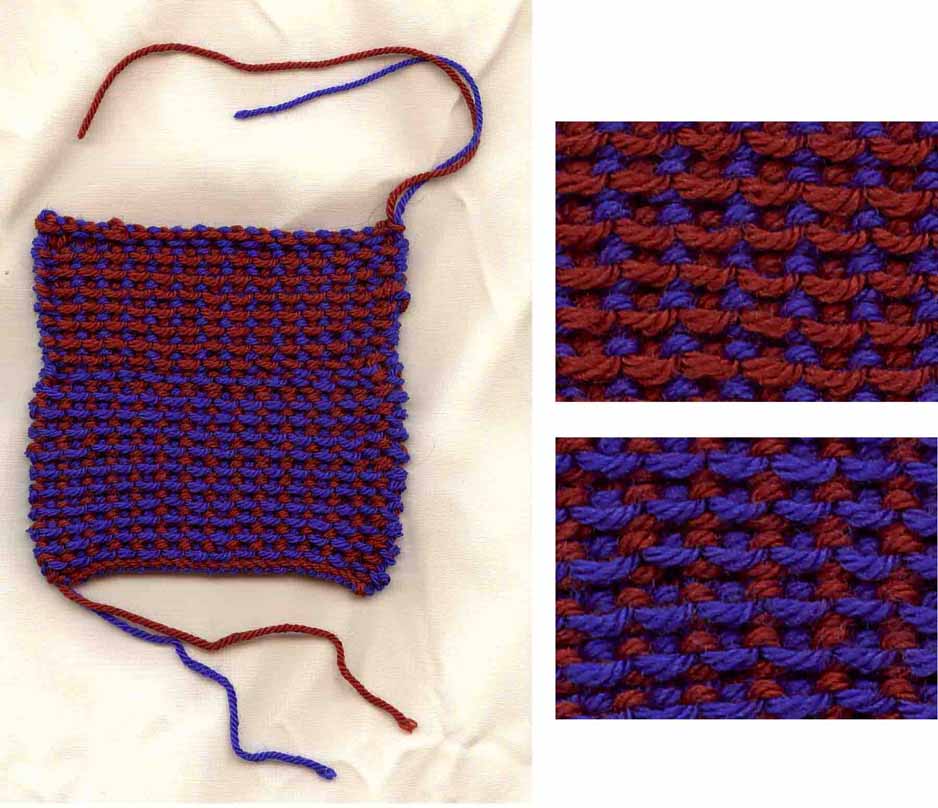Woven Garter [WG] stitch is basically garter stitch using two yarns, let’s call them Yarn A and Yarn B. The yarns are alternated as you knit the stitches ABABABAB in each row. It’s also a stranded or jacquard technique [often called Fair Isle] in which the yarns are carried along the row together. Unlike the standard stranded techniques, WG has no purl rows.
I talk about Yarn A and Yarn B often. Yarn A is carried ’on top’ or ’over’ Yarn B. This perhaps makes sense to some of you already. I hope it makes sense to all of you soon! Carrying Yarn A on top affects the look of the fabric you are knitting. Do a sample as follows to find out more about this.
Materials and Tools: 4mm needles and two smooth 8ply yarns in contrasting colours— say blue for Yarn A and brown as Yarn B. Cast on 30 stitches in Yarn B. Join in Yarn A and knit to the end of the row alternating Yarns A and B as follows.
Row 6 ABABABABABABABABABABABABABABAB
Row 5 BABABABABABABABABABABABABABABA
Row 4 ABABABABABABABABABABABABABABAB
Row 3 BABABABABABABABABABABABABABABA
Row 2 ABABABABABABABABABABABABABABAB
Row 1 BABABABABABABABABABABABABABABA
Read Row 1 and following odd rows right to left,
Row 2 and following even rows left to right .
With an even number of stitches every row starts with Yarn A.
You don’t have to count rows or stitches once you get going. All you have to remember is to knit each stitch with the opposite Yarn.
The importance of having Yarn A carried above Yarn B by whatever method used is that its floats are the ones that show up as dashes when a smooth Yarn A is used or is dominant and masks Yarn B when a textured Yarn A is in action.
Check this out as follows. After you have done 15 rows with your blue yarn as Yarn A change them over and now use the brown as Yarn A. Do 15 more rows and look at the difference.

In the bottom part Yarn A is blue. I’ve done more than 15 rows with the Blue Yarn A in this
sample – the top section with the brown Yarn A was 15 rows. The views on the right are close ups of the two sections and show the detail of the stitch. Each of these shows six lots of Yarn A “dashes” across and six down. It helps when counting rows to know that each “dash” represents two rows and two stitches, hence each of these sections shows 12 stitches by 12 rows.
Cast off this sample and start another except this time choose a textured yarn as Yarn A and a smooth as Yarn B. Do your sample as before and notice the difference when you change again and use the textured yarn as Yarn B. Choose 2 textured yarns in different colours. Get into the swing of it and start improvising.
Knitting with two yarns at the same time is described on the next page.